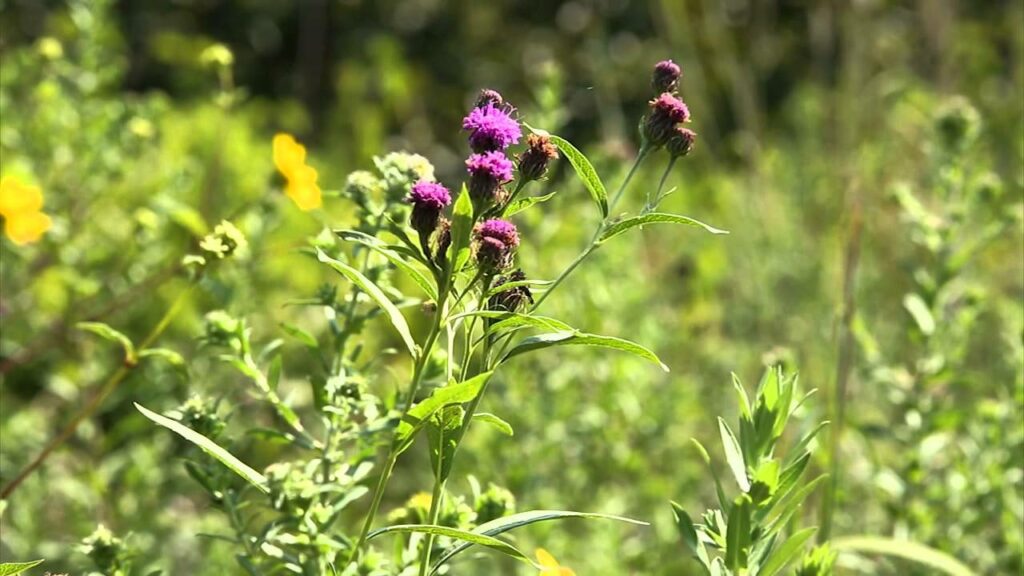Check your flashlights and put your hard hats on – Cave Week 2024 is coming soon!
Celebrated from June 2-8, 2024, Cave Week focuses on caves and karst, unique cave and karst ecosystems, and conservation and restoration efforts in caves across the country.
What is karst?
Karst forms when water that is weakly acidic dissolves limestone beneath the Earth’s surface. The acid dissolves the rock, leaving behind open areas that can become sinkholes or caves.
Here are some Natural Inquirer resources (all free, of course!) to help you learn more:
The Caves and Karst Edition
The Caves and Karst edition of Natural Inquirer is written for middle school students and covers four different research studies conducted in caves and karst landscapes.
Learn about:
- Bats and white-nose syndrome
- How caves and cave formations are created
- The Tlingit people and how humans have used caves throughout history
- How karst landscapes affect the forests growing above them

Caves LIVE
Explore caves around the world and learn more about their unique ecosystems in this virtual learning adventure from the Forest Service and other partners.
The virtual learning adventure is followed by a Q&A session with scientists who answer viewer questions about caves.
Learn about:
- How caves are formed
- How nutrients and water flow through caves
- The animals that call caves home
- How humans have used caves
- Research being done in caves
- What we can do to protect caves

Caves and Karst Learning Module
Want a way to integrate Natural Inquirer articles and the Caves LIVE program? Check out our Caves and Karst Learning Module!
- Includes articles, activities, and video clips
- Use the entire module or choose the sections that are relevant to you
- Designed for upper elementary and middle school students

Scientist and Engineer Cards
You can also learn more about the scientists who work in caves with our scientist and engineer cards. Here are just a few:
-


Joanna Kovarik, Geologist & Speleologist

- Ph.D., University of South Florida
- USDA Forest Service Scientist
- A speleologist is a scientist who studies caves and the environments in which caves occur. Speleologists come from a diversity of educational backgrounds. My background is hydrogeology and geography.
- Ph.D., University of South Florida
- USDA Forest Service Scientist
- A speleologist is a scientist who studies caves and the environments in which caves occur. Speleologists come from a diversity of educational backgrounds. My background is hydrogeology and geography.
-


Ted Weller, Ecologist

- M.S., Humboldt State University
- USDA Forest Service Scientist
- An ecologist studies the interaction between animals, their environment, and the weather. In my work, I study how those interactions change among seasons.
- M.S., Humboldt State University
- USDA Forest Service Scientist
- An ecologist studies the interaction between animals, their environment, and the weather. In my work, I study how those interactions change among seasons.
-


Susan Loeb, Conservation Biologist

- Ph.D., University of California, Davis
- USDA Forest Service Scientist
- Conservation ecology is the study of plants and animals in their natural and human-impacted environments to determine what they need to maintain healthy populations.
- Ph.D., University of California, Davis
- USDA Forest Service Scientist
- Conservation ecology is the study of plants and animals in their natural and human-impacted environments to determine what they need to maintain healthy populations.
-


Joe Gurrieri, Hydrogeologist

- M.S., University of Connecticut
- USDA Forest Service Scientist
- A hydrogeologist is a person who studies the ways that groundwater (hydro) moves through the soil and rock of the earth (geology). Hydrogeologists evaluate the quantity, quality, reliablity, and sustainability of groundwater.
- M.S., University of Connecticut
- USDA Forest Service Scientist
- A hydrogeologist is a person who studies the ways that groundwater (hydro) moves through the soil and rock of the earth (geology). Hydrogeologists evaluate the quantity, quality, reliablity, and sustainability of groundwater.
We hope you’ve gotten some great ideas for celebrating Cave Week this year!
You can learn more about Cave Week 2024 at Celebrate Cave Week! – Caves and Karst (U.S. National Park Service) (nps.gov).
Also check out Caves & Karst | US Forest Service (usda.gov) to learn more about the Forest Service’s role in managing caves and karst landscapes.













